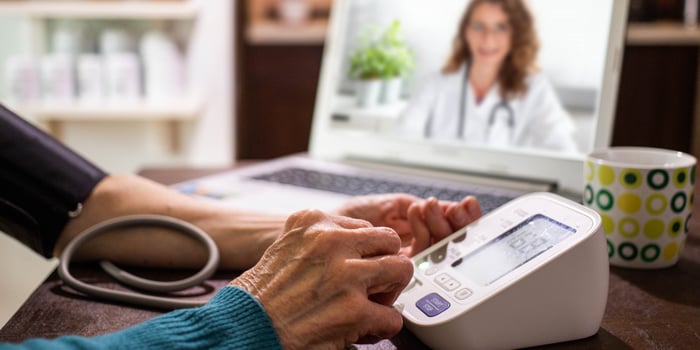In the wake of a boom in service delivery during the pandemic, telehealth providers need to keep striving for continuous improvement
The COVID-19 pandemic has led to an enormous surge in telehealth consultations. In Australia, with the nation achieving near-universal vaccination coverage and people resuming movement within the country, the question now is whether this was just a temporary trend or if it will continue to be a major feature of modern healthcare.
“Once lockdowns are relaxed, we tend to see a movement back to face-to-face consultations, but it would be really good if we could maintain a higher level of telehealth use even when not in lockdown,” says Kim Ford, President of the Australian Telehealth Society.
So, what’s next for telehealth providers as the pandemic either recedes or changes shape?

Platforms of the future will need to be flexible and integrated
Visiting the doctor has long been a hallowed ritual. However, a key question for practitioners will be deciding the best method of care for a particular patient. “To me, when we have a referral come in, we need to decide: is this best done face to face, or is it better for telehealth?” says Professor Marc Budge, Director of Clinical Services at Bendigo Health.
A patient should be able to access video-based care on their preferred device,provided it offers strong enough resolution to enable detailed physical examinations and laboratory tests. It is also important to be adaptive across different technologies. For example, some people are more comfortable having a telephone conversation with their doctor, even though this may result in a lessened clinical experience.
In Tasmania, Telehealth Tasmania is developing an integrated patient management system that can handle both telehealth and face-to-face bookings, supported by voice-over internet protocols (VoIPs) that enable telephone calls. Patients can convert their in-person consultation to a telehealth booking if they can’t attend or are running late – and other people waiting in line are notified that capacity has freed up.
Meanwhile, at the clinician end, there is a need to support both telehealth consultations that occur in real-time, as well as what Budge terms “asynchronous” sessions where a patient is recorded, and the video is observed later. For example, if a nurse is doing a cognitive assessment or memory test, a doctor can see how that person is performing in his or her own time.
Telehealth can be truly personalized and data-driven
The next wave of reform in telehealth will involve securely integrating telehealth with electronic medical records and decision support systems. Ideally, doctors should be able to assess every presenting patient with access to their full case history.
As noted by Dr Alline Beleigoli, Senior Research Fellow at Flinders University, this could be supported by a range of real-world data, including smart home equipment or personal devices (including Fitbits) that monitor everything from a person’s blood pressure to their heart rate, sleeping patterns or number of steps per day.
Beleigoli says that having access to as much information as possible will guide doctors in diagnosis and treatment, helping them to better understand patients’ needs and preferences and offer individualized care.
Equally, patients should be empowered to access their own health data anytime and anywhere, achieving greater self-reliance in terms of their own care.
More public investment is needed, not less
Telehealth services offer potential to both improve the patient experience – and to relieve the pressure on hospital systems by managing healthcare in the community. Certainly, this is one of the aims of Telehealth Tasmania’s “COVID at Home” model that is designed to remotely monitor COVID-positive patients.
However, more government investment, not less will be needed to run the system – including by creating a digitally mature workforce. One example could involve training medical students to be technologically literate or adapt their communication style to suit the nuances of telehealth. Continuing Medicare rebates and reimbursements for virtual consultations will also be essential post-pandemic – as well as extending this pricing system to the acute and inpatient sectors.
“The patients love it; the patients would use it every day of the week. The ones to get over the line are the clinicians. There needs to be an expectation that people will use telehealth,” Ford says.
To learn about Pexip solutions for modern telehealth, visit Pexip Health.
- Healthcare





